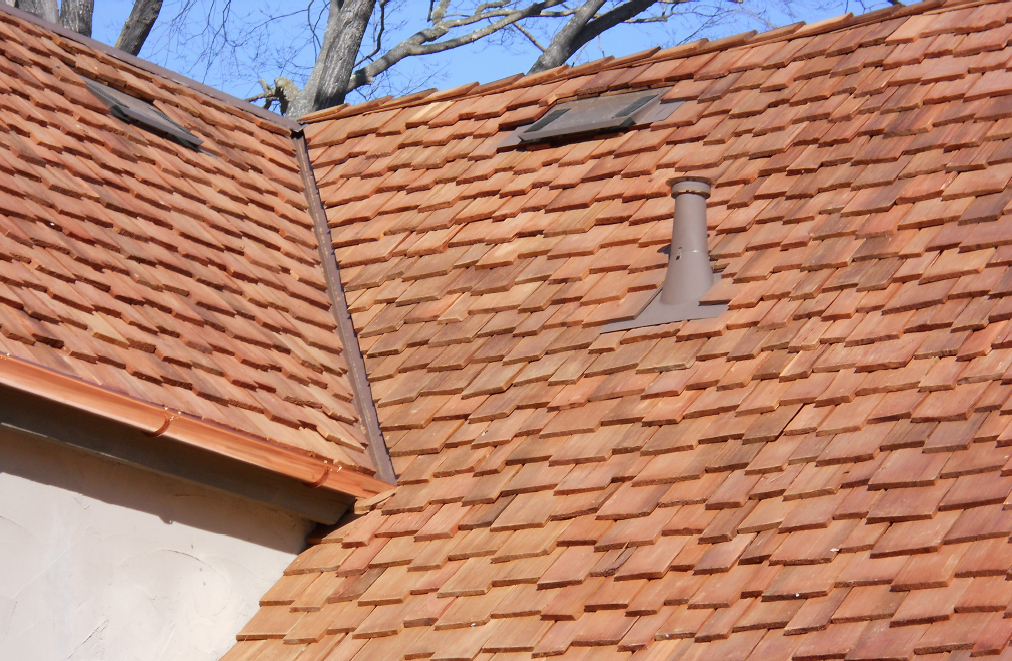
Considering the cost of a new roof, you’ll want to be proactive about protecting your investment. Photo: Daddario Roofing Company, Inc. (2016)
A roof is considered one of the bare essentials of life—after all, how many times did your parents remind you to be thankful for “the roof over your head”? Unfortunately, in addition to being essential, roofs happen to be extremely expensive. That’s why, if you’re planning for a roof replacement, you’ll want to be proactive about making a wise investment. To help you do just that, we’ve created the following roof replacement guide, featuring helpful expertise from five Diamond Certified Expert Contributors.
Repair or Replace?
When it becomes clear that your roof requires service, the first thing you’ll need to determine is whether to repair or replace it. According to Steve Daddario of Daddario Roofing Company, Inc., a couple of key factors to consider are the roof’s age and condition. For example, if you have a 15-year-old medium shake roof that’s in decent shape, you know it’s still five to 10 years shy of its 20- to 25-year life expectancy, which would make repairs a wise investment. However, if your roof is approaching its life expectancy marker or is in such poor condition that repairs won’t substantially expand its lifespan, you’ll be better off investing in a replacement.
When to Schedule a Roof Replacement
If you determine that your roof needs to be replaced, you’ll need to start planning for the project. According to Darryl Simon of Simon Says Roofing, an important consideration in this regard is scheduling. Since roofers tend to be busiest from late summer to fall, you should aim to schedule your project in the spring. Not only will you have a wider range of available contractors to choose from, you’ll likely get a better price than you would during summer, when the high demand triggers increased rates. Additionally, you’ll likely get better service during the off-season, as your contractor and crew won’t be as hurried to move on to the next job.
Who to Hire for Your Roof Replacement
The other crucial consideration when planning for a roof replacement is who to hire. Along with choosing a roofing contractor with the right credentials and reputation, Javier Martinez of Winter Roofing Inc. suggests hiring one that’s factory-certified. Most roofing manufacturers offer certification programs, whereby roofing contractors can become certified to install their products and systems. In addition to possessing a verified level of expertise, factory-certified roofing contractors are eligible for extended installation warranties, which, considering the cost of a new roof, is a significant bonus.
How to Prepare for Your Roof Replacement
As your project date approaches, you’ll need to get your home prepared for the big day. Pete Scudder of Scudder Roofing Company offers a few helpful tips: “Make sure your indoor and outdoor possessions are protected. Put away or stabilize fragile items that are hanging on walls, as vibrations from the work can cause these to fall. Likewise, items stored in your attic or garage should be covered or removed to avoid being damaged by falling debris.”
Mr. Scudder also recommends taking measures to minimize the impact of dust, which is an inevitable side effect of the vibrations caused by roof work. Homes that have open-beam or cathedral-style ceilings are particularly vulnerable to this, so if yours does, make sure your contractor covers the interior of your home before work begins.
Maintaining Your New Roof
Once your new roof is installed, you might assume you won’t have to think about it for another few decades, but this is far from the case. As Steve Daddario affirms, all roofs, regardless of style, require maintenance and/or repairs at some point during their lifespan. Shake roofs, for example, need to be tuned up at 12 to 15 years of age. Tile roofs also require specific maintenance. According to Tom Rhoads of Roof-Life Construction, commonly needed measures include reinstallation of slipped or migrated tiles, replacement of damaged rubber vent pipe collars, resealing of tile intersections, and clearing of debris buildup in valley intersections, the latter of which is a common cause of leaks.
To ensure both quality and safety, it’s best to defer your roof maintenance needs to a professional. Remember, maintenance isn’t just about avoiding a premature roof failure—it’s also a contingency of most roof warranties, which is why ignoring it can end up costing you. Overall, by planning carefully for your new roof and maintaining it after the fact, you’ll get the most value from your investment.
